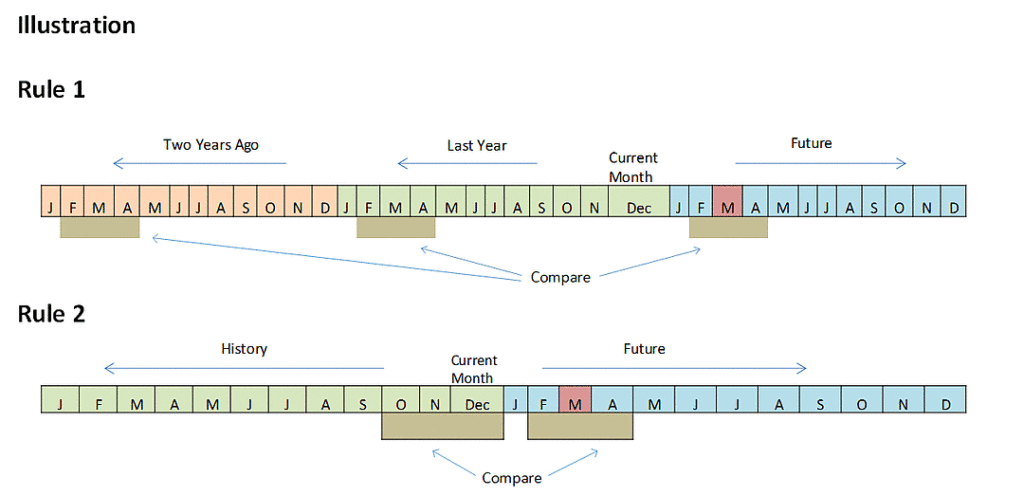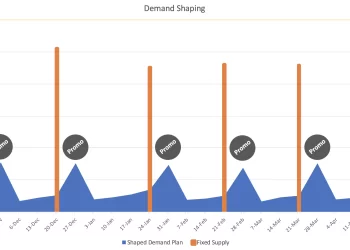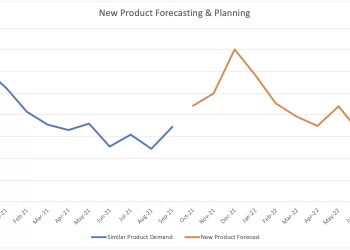Most Effective Exception Based Demand Management Techniques

One of the biggest issues in demand management is dealing with unexpected changes. These unanticipated changes in demand render management plans useless, and send managers into crisis mode. However, there is a better way to stay on top the unpredictable world of demand management. Exception based demand management is the best way to streamline the supply chain while still being prepared for sudden changes in demand.
What is Exception Based Management?
An exception is any deviation from the acceptable business process planning strategy that the organization has implemented. Exception based demand management uses a forecasting process that also identifies anomalies in the forecast. You are then able to proactively make corrections before any damage is caused.
When an exception based demand management strategy is used, the key players in the organization decide what type of exceptions should be identified in the forecast. This requires balancing the cost of managing the exceptions with the cost savings in properly executing the strategy.
No forecasting model is going to be completely accurate. An organization can either weather the ups and downs of the errors in the forecast, or it can use exception based management techniques to eliminate many of the errors and inefficiencies produced by the forecast.
Why It Matters
A properly implemented exception based demand management strategy can produce significant savings to an organization. It can also reduce, or even eliminate, disruptions in delivering products to customers on time. It can help ensure that inventories are not overstocked to account for volatility in demand, resulting in less waste.
Exception based demand management also becomes more efficient over time. It is an iterative process that first resolves the biggest issues in the planning cycle, and is built upon and improved during each subsequent planning cycle. When used properly, it can also capture near real-time data. This data can then be used to avoid major disruptions and manage dips and surges in demand that could not have been forecasted.
Effective Techniques to Identify Exceptions
Exception management only works when you take the time to properly define exceptions. If you take too broad of an approach, even the smallest change can become an exception and so much time and money is spent managing even minor exceptions that it wipes out any cost savings. If the approach to defining exceptions is too narrow, major disruptions can still occur, some of which may have devastating long-term effects on the business.
The best way to start out is identify typical exceptions that are likely to have a big effect on the business, and continually add exceptions that will have a lesser, but still significant, impact on the business. In this way, exception based demand management works as a funnel. During the early phases it solves the biggest problems. After several iterations it solves smaller anomalies until you hit a defined threshold of anomalies that are not cost effective to manage.
Some of the first types of exceptions an organization will want to identify are:
- Biases in the forecasting model
- Products with unusually high or low levels compared to historical data
- Sales that are significantly behind or ahead of the forecast
- Excess inventory of finished products
There are two main ways to find SKU specific exceptions. The first is to simply review every product SKU in your inventory. This is sometimes referred to as an ABC analysis. You begin an ordered examination of your inventory and forecast and then look for mismatches with historical data, actual sales, and shipments. While the ABC approach is effective at finding exceptions, it is also expensive because it is so time and labor intense. Especially for organizations that have hundreds to thousands of products this may not be a feasible option.
A second approach is to take a data centric approach. This is best done with demand management software. There are four key steps to this approach:
- Data preparation
- Exception analysis preparation
- Data mining
- Interpretation phase
During the first step you identify the data you need to analyze. This will depend on your organization, but typically includes things such as forecast, inventories, sales, and shipments.
The second step requires setting the rules for the search for exceptions. This will require the key stakeholders to decide what type of variance in demand is acceptable. The team will need to have an idea of how many exceptions is too few and how many are too many to manage based on the length of the planning cycle and available resources. It also requires a keen understanding of the existing forecasting model. It may take a few tries before this step is mastered.
Once the type of data has been chosen and the rules for identifying exceptions have been set, an algorithm is applied to the data. This will identify the exceptions in the data. This is the data mining phase.
Once you have identified the exceptions you will need to decide the best ways to take action on them. When you first begin using exception based demand management techniques you may find during the interpretation phase that you have too many exceptions or too few exceptions. This will require you to go back and look at the rules you chose in the second step. Also very important is how you prioritize and address the exceptions. You would typically want to start with the high volume and/or high revenue products and/or mission critical products and work your way down to the products/customers that have lesser impact on your business. Basically, take care of your “A” products first and then move on to the B’s and C’s.
However, even if there are mistakes in the number of exceptions identified, you will be able to begin work on the most important exceptions. After a few iterations, the process will become more efficient.
Exception based demand management is now widely recognized as the best way to avoid business disruptions due to unstable demand. Failure to implement some form of exception based demand management will put your organization at a strategic disadvantage.
Topics: Causometrix
Written by Jamsheed Iqbal
Topics:
Leave a Reply Cancel reply
Recent Posts
-
Best Practices for Demand Sensing, Demand Shaping, & Influencing Demand
Despite vast improvements in the tools and techniques available today for demand sensing and demand shaping, a lack of forecast accuracy still prevents many businesses from optimally managing production, distribution, inventories, and sales to meet shifts in demand. This is often because:
October 12, 2021 Read more -
How to Effectively (and Accurately) Forecast and Plan for New Product Demand
Many businesses, large and small, have a huge source of great ideas that can help them improve, innovate, and grow, and yet so many of these companies never think of using this amazing corporate asset. What is this highly valuable asset? Its own people.
September 28, 2021 Read more -
How to Measure your Demand Forecasting Accuracy
Many businesses, large and small, have a huge source of great ideas that can help them improve, innovate, and grow, and yet so many of these companies never think of using this amazing corporate asset. What is this highly valuable asset? Its own people.
July 13, 2021 Read more
Subscribe to email updates from Causometrix!
Stay up-to-date with Causometrix



Siddhartha Sanniti
Hi Mr.Iqbal,
A very useful article. Thanks for sharing it. I would like to understand the different algorithms used academically and practically by different companies to identify anomalies in the MAPE and BIAS data as part of exceptions management of demand planning.
Mail me at- sanniti.siddhartha@siom.in
Looking forward to your reply.
Thank you.
Mairaj Rashid
Thank you for this. Very detailed article which gives clear understanding of the process.